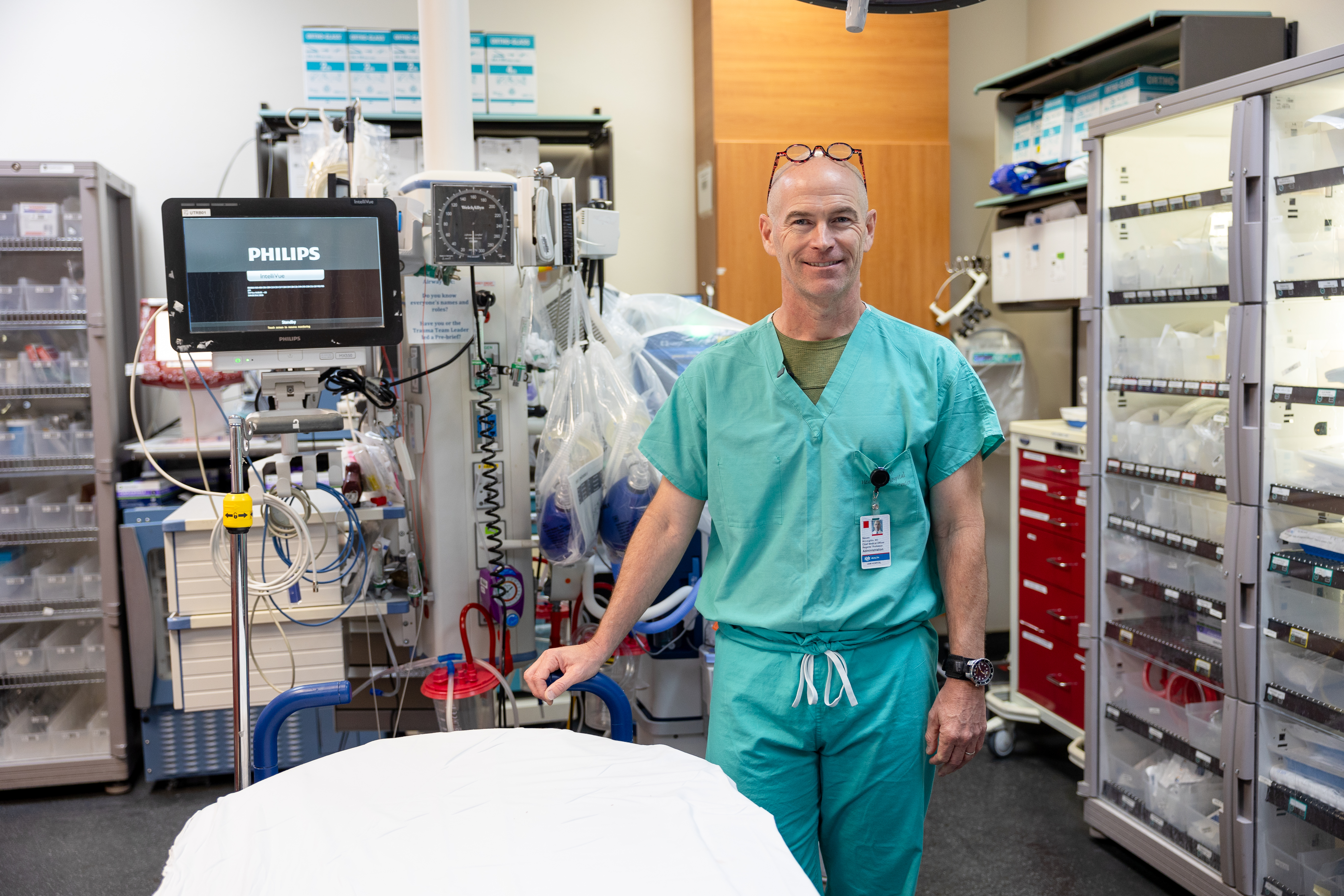While there are a lot of places to receive emergency care, not all hospitals are the same. When it comes to treating the most severe, life-threatening injuries with cutting-edge treatments and technology, there’s only one place in New Mexico—The University of New Mexico Hospital. It is the only Level-I trauma center in the state.
Level-I Trauma in a Nutshell

- Highest designation a hospital can receive for trauma care
- Designation awarded by state health officials, with guidance from a national organization
- 24/7 Emergency Department capable of taking care of trauma patients with trauma surgeons, neurosurgeons and anesthesiologist available in house around the clock.
- All high-level trauma cases in New Mexico are transported to UNM Hospital
- UNM Hospital is the only Level-I trauma center in New Mexico

“A Level-I trauma center is the highest trauma care designation that you can have as a hospital and it's related to the resources that are available, 24 hours a day, seven days a week to take care of the sickest and most injured patients.”
What is a Level-I Trauma Center?
UNM Hospital Chief Medical Officer Steve McLaughlin, MD, explained that Level-I trauma centers require a lot of resources and medical specialists in neurosurgery, trauma surgery and anesthesiology. Due to the state’s smaller population, New Mexico has only one Level-I Trauma center despite its large geographical size.
“For a smaller population, it makes sense to centralize all of those resources in one place,” he said. McLaughlin also said it is more cost effective and allows specialty departments to better support each other.
Patient Care at a Level- I Trauma Center
UNM Hospital is located in Bernalillo County, which is home to its largest patient population—but it also serves patients from across New Mexico, as well as some from Arizona and southern Colorado.
No matter what hospital a patient initially goes to in Bernalillo County, if the care team determines that patient needs a more complex level of treatment, they will arrange transport to UNM Hospital. McLaughlin said many transferred patients have suffered blunt force injuries to the heart, lungs, abdomen, brain, or spine, that require multiple-system care.
The same goes for hospitals outside of Bernalillo County, in other areas of the state.
Often, those patients will first go to a hospital that is closest to them. Care teams there may provide crucial interventions like stopping bleeding, supporting breathing, and performing tests and scans. UNM Hospital works closely with rural care teams and even other Metro-area hospitals to coordinate transport to Albuquerque by helicopter, airplane or ambulance. Patients with minor injuries, such as lacerations or isolated broken bones, are not likely to be transported.
“I'm an ER doctor, and one of the most satisfying parts of my job is to be able to take care of trauma patients,” McLaughlin said. “I believe that we do a really good job of it here. We make an impact on peoples’ lives when they come in, and seeing patients after they've been through their hospitalization, and they're healed up, and they're back to work, they're back to their families, that's a really satisfying part of the job.”
How Does a Hospital Become a Level-I Trauma Center?
Ultimately, The New Mexico Department of Health (NMDOH) determines whether a hospital is a trauma center and at what level, but McLaughlin said states often rely on criteria set by the American College of Surgeons (ACS). ACS performs an evaluation and makes a recommendation to a state health organization responsible for make the final determination.

Criteria include having open facilities and employees physically at the hospital 24 hours a day, seven days a week to take care of patients. Other important criteria include a hospital’s ability to conduct research, provide education, and public outreach. McLaughlin said this allows providers to help patients throughout their entire care journey.
UNM Hospital has an entire team of staff members, nurses, and physician leaders that run a program to make sure UNM Hospital is maintaining its status and continually meeting the requirements for Level-I trauma accreditation.
“We have to make sure that we meet the staffing requirements, have the right kinds of people, the right space, etc., and then every three years, ACS will come in and do an assessment,” McLaughlin said.
Looking Toward the Future
With the construction of a new Critical Care Tower, UNM Hospital is adding nearly a hundred inpatient beds and 18 new operating rooms to expand its critical care services. It also works closely with its other campus, UNM Sandoval Regional Medical Center (SRMC), which is a Level-III trauma center in Sandoval County. SRMC also offer 24/7 services, is equipped to stabilize trauma patients, provide resuscitation, intensive care, and perform surgeries.
“Thinking about how those two hospitals work together to better take care of patients is one of the things that is going to be really important, as we go forward,” McLaughlin said.
As the only Level-I trauma center in the state, UNM Hospital relies heavily on community support.
Voters in Bernalillo County this general election will be asked if they are willing to continue a critical investment for UNM Hospital. That investment is through a mill levy, or property tax, which substantially helps operations and maintenance of the hospital, accounting for about 10% of the hospital’s budget.
“It's an extremely important and essential source of funding for the hospital,” McLaughlin said. “So, I would just say the most important thing that people can do in the community is to get out there and vote in November.”
UNM Hospital is Your Hospital
Click below to read more about how the UNM Hospital care team serves patients across New Mexico:
Patient Stories:
- Extra Innings: Local Baseball Legend Saved by Fast-Acting UNM Hospital Team
- UNM Hospital’s Commitment to Native American Care
- UNM Hospital Team Inspires Teen Shooting Victim to Become a Nurse
- Off Duty UNM Hospital Employees Save a Bicyclist’s Life on the Bosque Trail
- UNM Lifeguard’s Guardian Angel
Recent Awards and Recognition:
